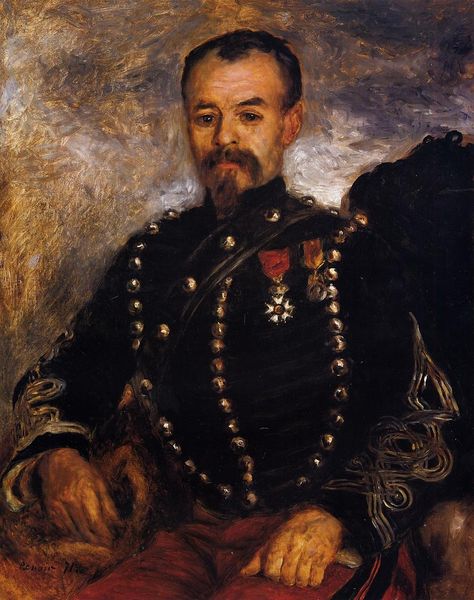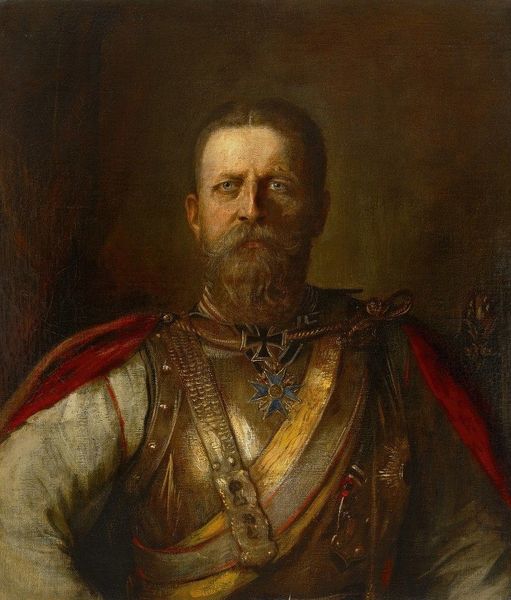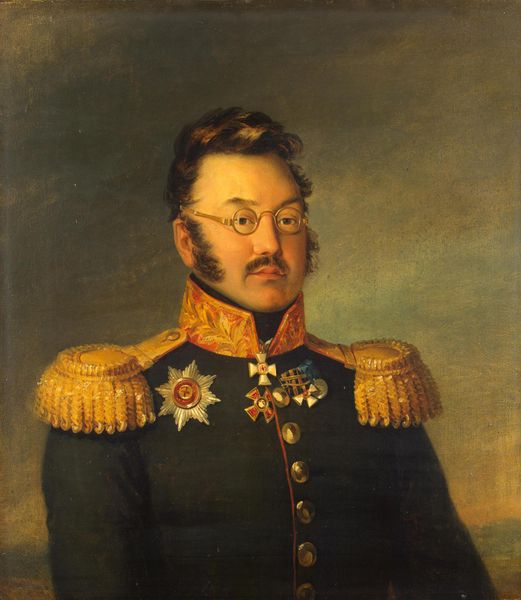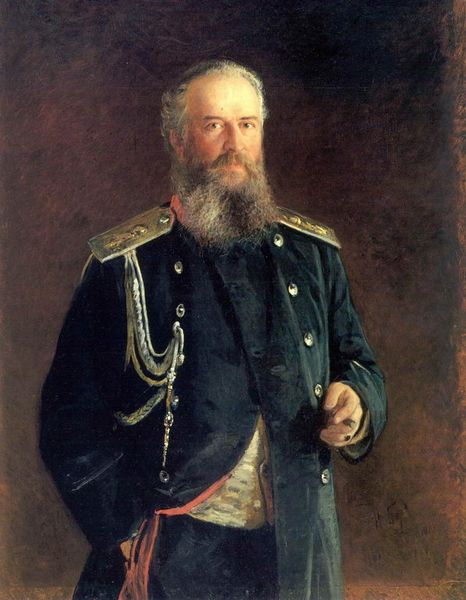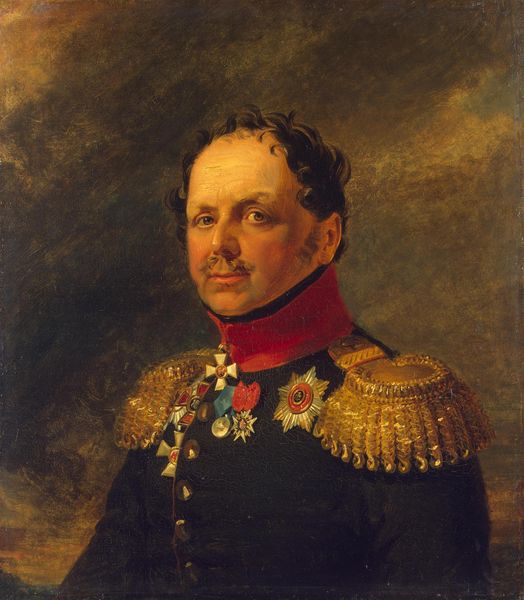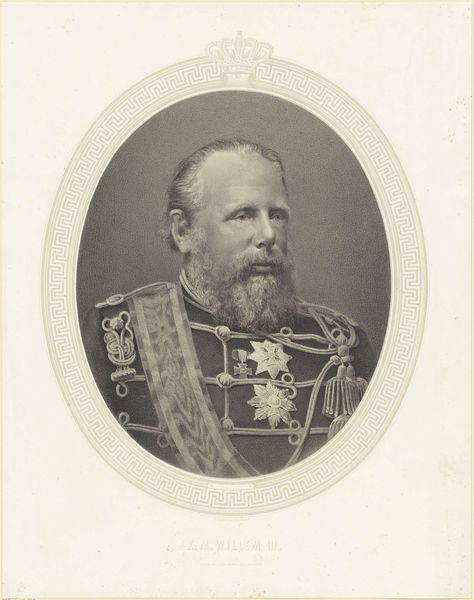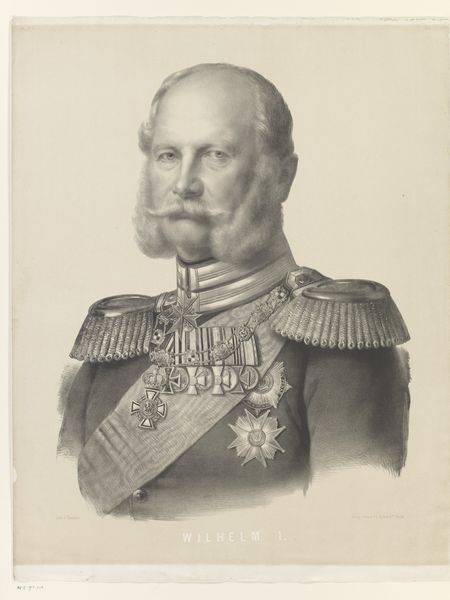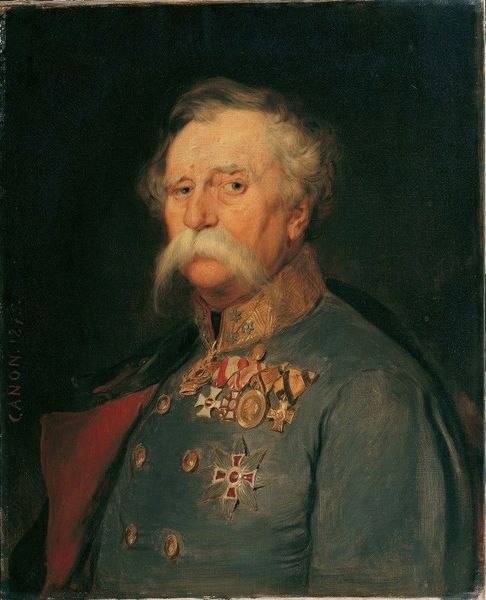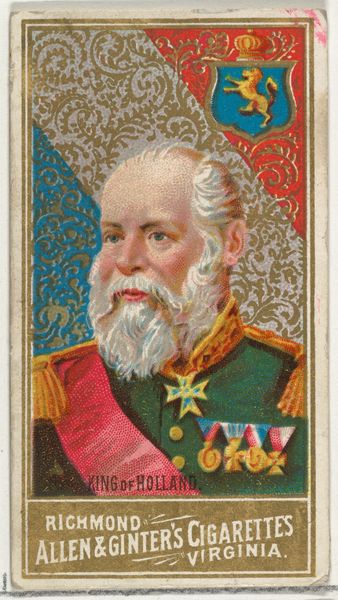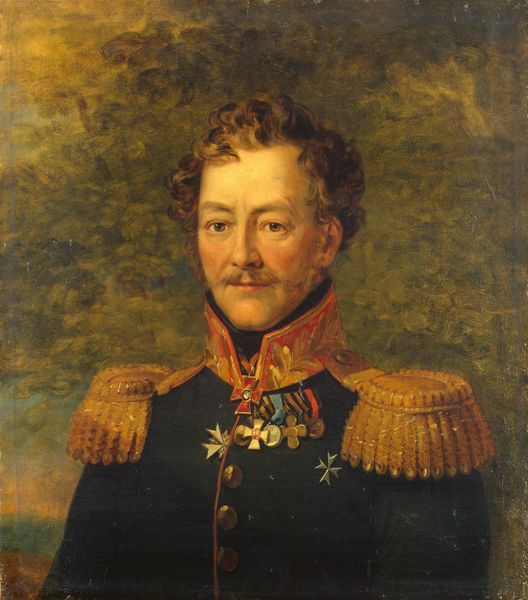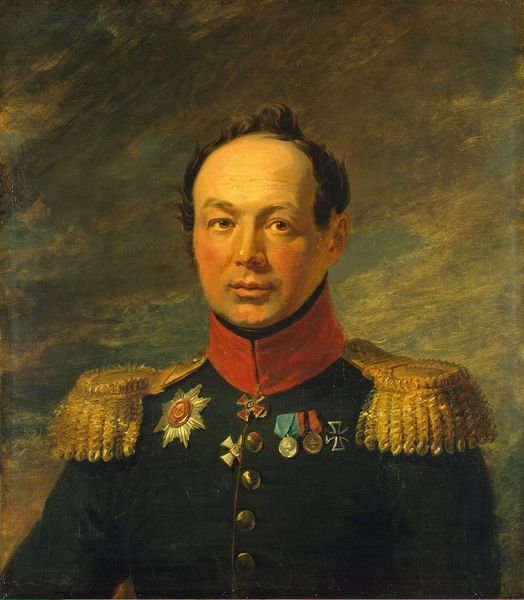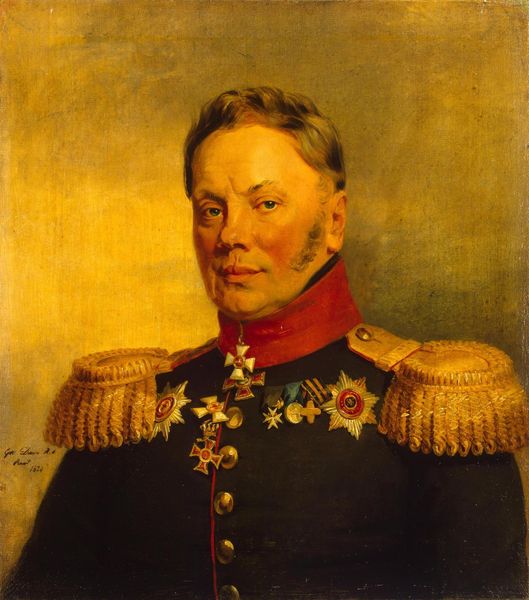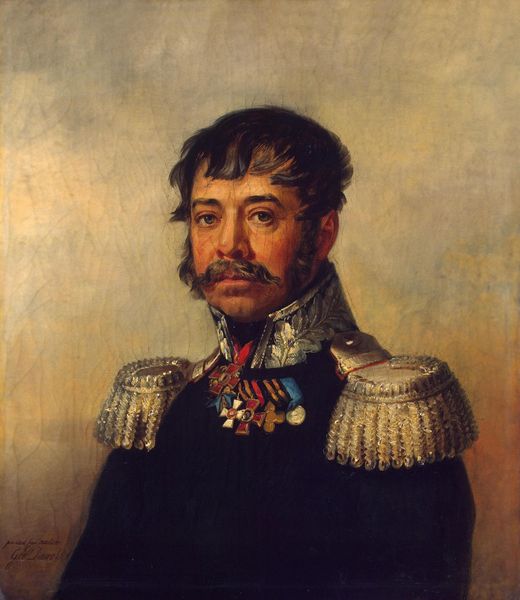
Copyright: Public domain
Editor: So, this is Gerolamo Induno's "Portrait of Vittorio Emanuele II," painted in 1860 using oil paint. It’s a pretty straightforward portrait, but the subject's expression feels surprisingly… stern? What do you see in this piece? Curator: Beyond a formal depiction of power, I see a complex representation of Italian identity at a crucial historical juncture. 1860, right after the Second Italian War of Independence... this portrait isn't just a likeness; it’s a statement. Editor: A statement of what, exactly? The Risorgimento? Curator: Absolutely. It's worth considering the politics of portraiture during nation-building. How does Induno want us to see Vittorio Emanuele? This is not a vulnerable portrayal. Consider his direct gaze and the opulence of his uniform. These details construct a persona meant to embody the strength and stability of a newly unified Italy, at least for those who benefit most from that ideal. But it also raises questions: who is included, and who is excluded, from this national narrative? Editor: So, you're saying that the portrait is a political tool, presenting a carefully constructed image? Curator: Precisely. Think about the power dynamics embedded in visual representation and its potential impact in galvanizing support during such transformative periods. We need to ask whose interests are being served and whose stories are being silenced. What is the function of this artwork? Editor: I never considered how much a portrait could communicate beyond just someone's face! It makes you wonder about the messages we’re constantly absorbing from images even now. Curator: Exactly! Understanding the intersection of art and socio-political movements enables us to critically evaluate visual culture and understand our history from multiple viewpoints.
Comments
No comments
Be the first to comment and join the conversation on the ultimate creative platform.
